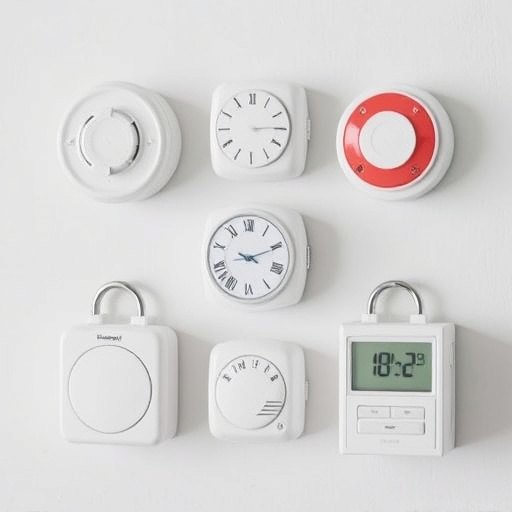Wearable security systems, like personal alarms and safety devices, offer modern protection with features like automatic fall detection, GPS tracking, and panic buttons for quick emergency alerts. The effectiveness of a panic alarm system depends on the best personal alarm sound distance, which should be loud (over 100 decibels) and cover 50-100 meters to ensure immediate assistance without false alarms. Users should prioritize devices with adjustable alarms, GPS tracking, and regular testing for optimal safety and peace of mind.
“In an era where personal safety is paramount, wearable security systems with panic features offer unprecedented peace of mind. This comprehensive guide delves into the world of these innovative devices, exploring their basic functions and untapped benefits. From understanding key components to evaluating the best personal alarm sound and distance for optimal protection, we equip you with insights for informed choices.
Learn essential implementation tips and safety measures to harness the full potential of wearable security systems, ensuring your well-being in various settings.”
- Understanding Wearable Security Systems: The Basics and Benefits
- Key Components of a Effective Panic Alarm System
- Evaluating Personal Alarm Sound and Distance: What Works Best?
- Implementation and Safety Tips for Wearable Security Devices
Understanding Wearable Security Systems: The Basics and Benefits
Wearable security systems, often in the form of personal alarms or safety devices, are a modern solution for individuals seeking protection and peace of mind. These innovative gadgets pack powerful features into compact, wearable forms, allowing users to stay safe and alert others in case of emergencies. At their core, these systems serve as a personal safeguard, offering functions like automatic fall detection, GPS tracking, and panic buttons that can send alerts to emergency services or pre-selected contacts.
The primary advantage lies in the accessibility they provide, ensuring help can arrive swiftly. For instance, a best personal alarm sound with a long range ensures visibility and attention during emergencies, potentially deterring potential threats. These devices are particularly beneficial for individuals who live or travel alone, offering a sense of security and an extra layer of protection. By integrating advanced technology, wearable security systems empower users to take control of their safety, making them indispensable tools in today’s world.
Key Components of a Effective Panic Alarm System
The effectiveness of a panic alarm system relies on several key components working in harmony. One of the most crucial is the personal alarm sound. This should be loud and distinct, designed to draw immediate attention and alert nearby individuals or authorities. The best personal alarm sounds are often high-pitched and repetitive, making them hard to ignore. Additionally, considering the distance at which the alarm can be heard is vital; a range that ensures help can arrive promptly is ideal.
Other essential features include easy activation mechanisms, such as simple press buttons or voice commands, allowing users to trigger the alarm quickly in distress situations. Wireless connectivity and GPS integration are also valuable additions, enabling real-time tracking and rapid response from emergency services. These components collectively contribute to a robust panic feature, enhancing personal safety and security.
Evaluating Personal Alarm Sound and Distance: What Works Best?
When evaluating wearable security systems with panic features, one critical aspect is the personal alarm sound and distance. The best personal alarm sound should be loud enough to startle and alert others in proximity, ideally reaching volumes exceeding 100 decibels. This level of sound has been shown to effectively deter potential attackers and draw attention to the wearer’s location.
Additionally, considering the optimal distance for activation is essential. Panic buttons should trigger an alarm both nearby and at a distance. A balanced range of around 50 to 100 meters allows for immediate notification of help without requiring excessive volume in public spaces. This balance ensures the system provides peace of mind while avoiding false alarms or over-sensitivity that could lead to ignores signals.
Implementation and Safety Tips for Wearable Security Devices
When implementing wearable security systems, users should consider devices that offer a range of safety features, including panic alarms with adjustable sound volumes. The best personal alarm sound distance should be loud enough to attract attention and deter potential threats while not being so intense as to startle or cause discomfort. Modern wearable alarms often come equipped with GPS tracking, allowing users to share their location in case of emergencies.
Safety tips for these devices include ensuring regular charging, keeping the device securely fastened at all times, and familiarizing yourself with the activation mechanisms. It’s also important to register your wearable alarm with local emergency services and inform close contacts about its functionality. Regular testing of the alarm and sound quality can help ensure the device remains reliable in critical situations.
Wearable security systems with panic features offer a powerful personal safety net in today’s digital era. By understanding key components, evaluating effective alarm sound and distance, and implementing safety tips, individuals can leverage these devices to enhance their security. In terms of the best personal alarm sound distance, it largely depends on individual needs and environments. Ultimately, choosing the right wearable security system can provide peace of mind and empower users to navigate their world with added confidence.
